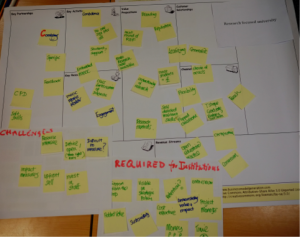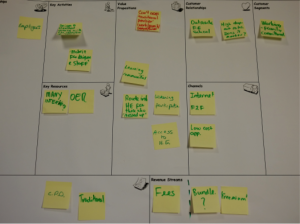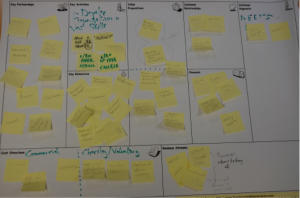At the Cetis conference 2014, Stephen and I facilitated a session on “Open Education and MOOCs”. We began with two very interesting presentations from Audrey Watters, a journalist and author of Hack Education, and Amy Woodgate from The University of Edinburgh. They offered two different perspectives: MOOCs as teaching machines vs MOOCs as teaching experiments.
Audrey shared some insights on how the ideas and principles developed by the founder of Udacity, Sebastian Thrun, and used to build Google’s self-driving car have been applied to MOOCs to make teaching and learning scalable and standardized. Audrey argued that with AI (artificial intelligence) mind-sets, MOOCs have been developed as teaching machines that use students’ data as the new oil that drives learners to automated education!,
A contrasting view developed in Amy’s presentation discussed how Edinburgh MOOCs have been used for experimenting with new online delivery methods and capability building. In this case, MOOCs can be seen as a vehicle for exploring new online learning pedagogy, acting as a catalyst for institutional change.
In the second half of the session, participants discussed the opportunities, challenges, motivation and capacities required for developing open online learning in institutions. They worked in groups to develop business models for adopting MOOCs in different types of organisations, namely: a Research Focused University; a Teaching Focused University and a New Market Entrant. Business Model Canvas was used as a tool to facilitate their conversations with each group developing a model canvas:
1. The Research Focused University
Highlights: Although finance and revenues are not big concerns for this type of institution, good will, enthusiasm and spare time of academics will not sustain institutional MOOC provision in the long run.
2. The Teaching Focused University
Highlights: Great opportunities for blended learning, flipped classrooms and experimenting with unbundling and rebundling. However, the new courses and models need to generate new revenue streams for institutions.
3. The New Market Entrant
Highlights: new market was identified to meet the unmet needs, such as NEETS. But it is unclear who is going to pay for it.
Overall, the session gave us lots of food for thought. After two years of MOOC hype, it is interesting to see that Udacity has moved towards corporate training and professional development and Coursera has also has shifted their focus away from impact on learners towards working with institutions.
The most significant contribution yet of MOOCs in higher education is that it has raised awareness of open education and raised the profile of open education resources (OERs) in teaching and learning practices in institutions. However, it emerged from discussions and the BMC exercises during the session that without vital financial support and a viable business model, the new wave of optimism around open online learning generated by MOOCs will gradually fade away.



